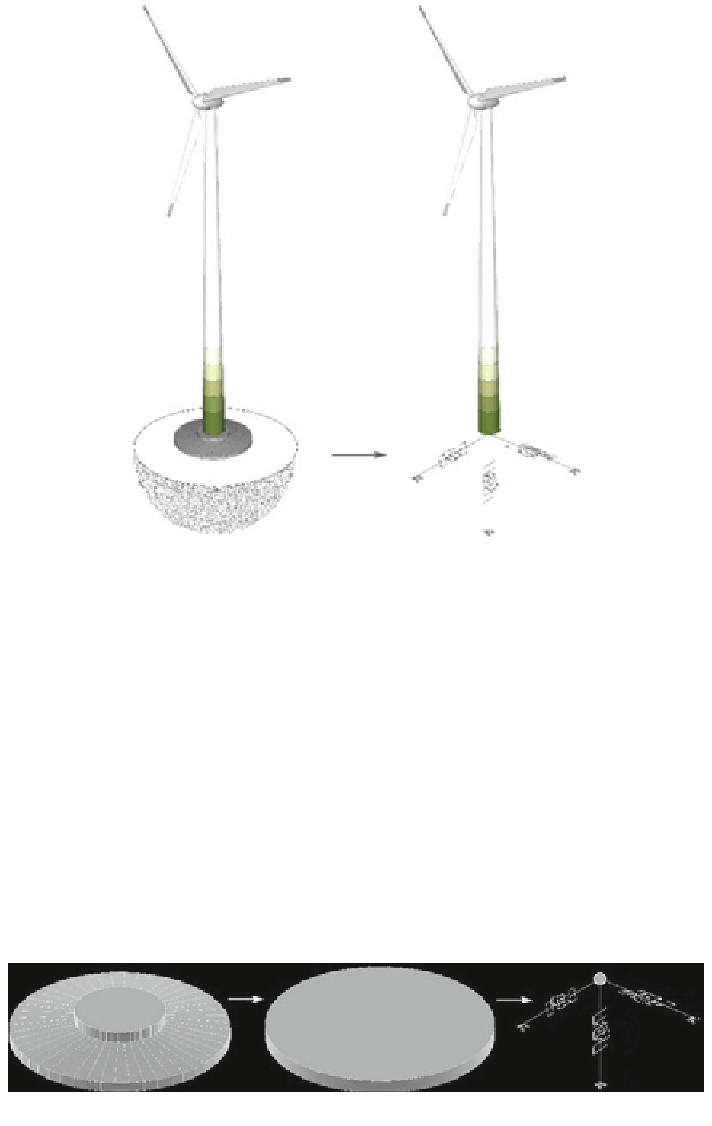Environmental Engineering Reference
In-Depth Information
Fig. 12.3
Wind turbine model with soil springs for the soil-structure interaction influence
mass moment of inertia). The foundation geometry can be idealized as an
equivalent rigid disk footing of radius r
F
(Fig.
12.4
) in order to simplify the
calculation of mass moments of inertia.
The LPM proposed by the DNV/Risø [
14
] does not include dashpots or ficti-
tious masses. The formulas for the soil spring coefficients address the case of
homogeneous half space, stratum over bedrock, and stratum over half space. From
the formulas it emerges that, the thinner the layer becomes the stiffer the gen-
eralized spring is. A comparison between the DNV model and rigorous model can
be found in [
32
] (Fig.
12.5
).
The DIBt coefficients can be computed according to the formulas in Table
12.2
.
Compared to the DNV/Risø model, the DIBt LPMs include also six dashpots (one
along each of the six degrees of freedom).
Fig. 12.4
Modeling of the foundation-soil system according to standard codes [
13
,
14
]

